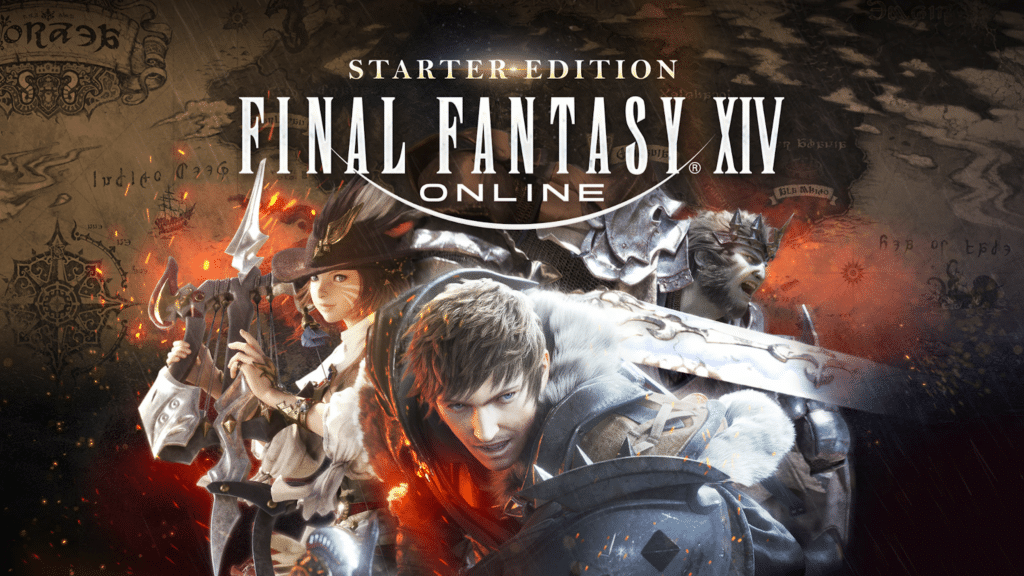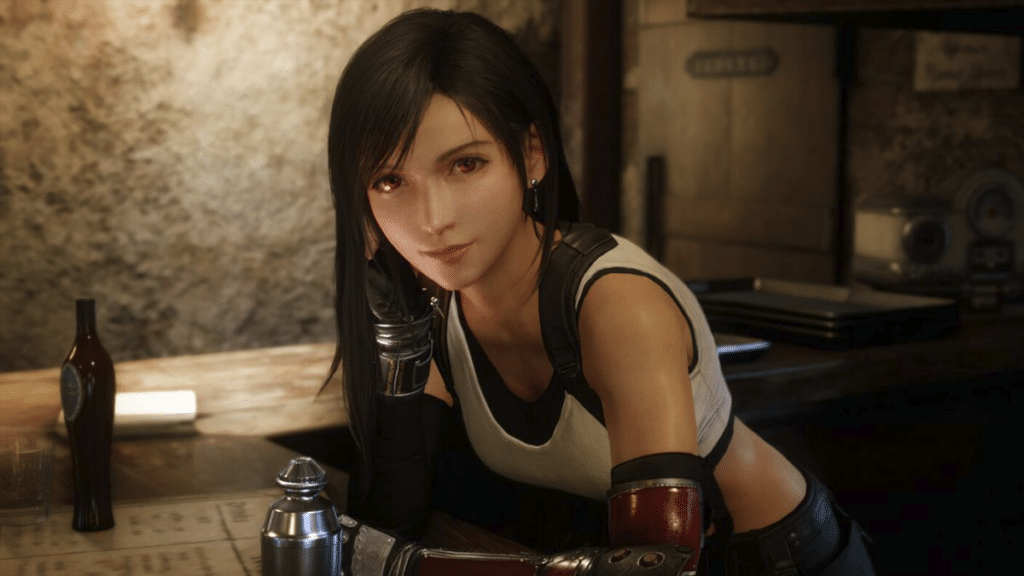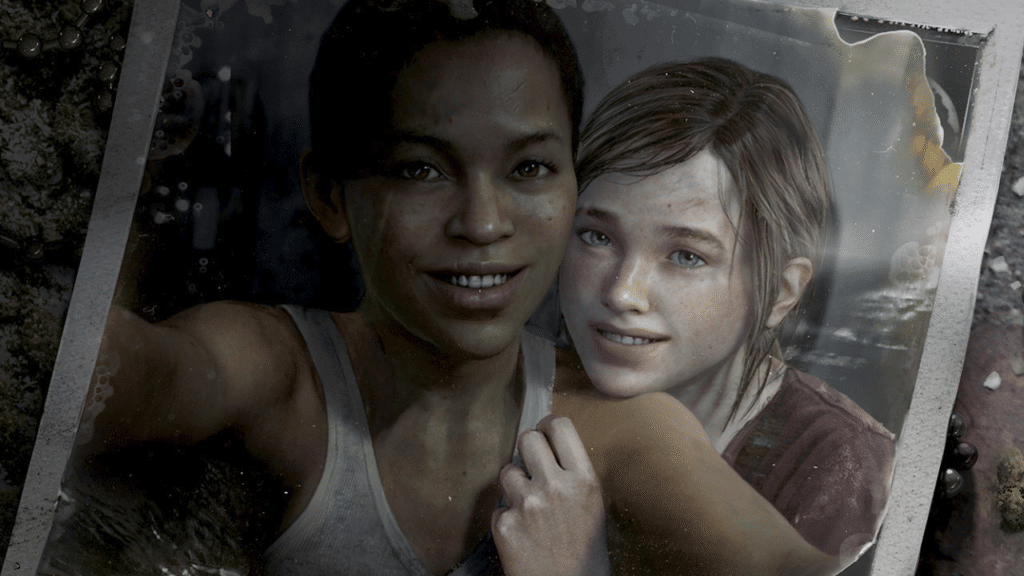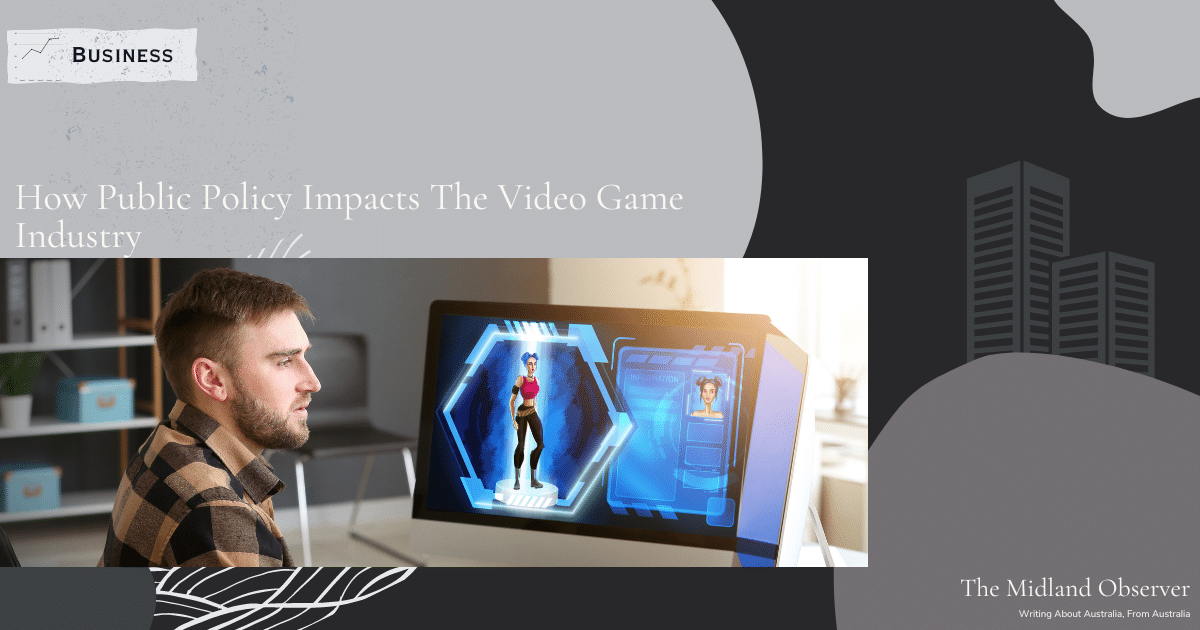Public Policy exists in almost all realms, at the intersection of social capital and the legal process, It dictates how the law is enforced and how the Public responds to different events. In essence, Public Policy is the set of socially enforced morals or codes of conduct that while not enforced by any institutions still affect how we are governed.
And Video Games are not immune, in fact, Gamers in particular display an interesting example of what Public Policy can look like in a digital world when a community is no longer decided by geographic location, and as such, can be affected by the Public Policy of multiple countries and political campaigns at the same time.
Any particular group’s Public Policy can be hard to define as it is definitionally the unwritten rules of any community but in the codified landscape of gaming, it’s sometimes clearer than one might expect if you take the time to investigate it.
Public policy can be incredibly helpful but only if the policy in place is there to serve the interests of the community, while un-interrogated expectations can irrevocably damage members of the community individually but also has the ability to cripple the young medium before it has a chance to establish itself as an art form.
Gaming is a unique expression of what Public Policy can mean at the moment and the growing pains of the medium and its fans could show us new facets of the phenomena and act as an example of what the modern world could look like going forward.
Public Policy Inside the Game: Etiquette and Final Fantasy XIV
What is fascinating is that we are quickly discovering that Public Policy is not a strictly in-person phenomenon, and any community of people will form their own self-policed rules to behave by. In gaming, the digital landscapes of these games are no exception.
MMOs (Massively Multiplayer Online Games) have been used as small examples of several social and economic phenomena such as market values and inflation, but we can also see Public Policy at work in these games.

Final Fantasy XIV by Square Enix
Final Fantasy XVI is one of the most rapidly growing MMORPGs (Massively Multiplayer Online Role Playing Games) on the market, currently with over 40 million players and is, importantly, an almost exclusively cooperative game with players teaming up to complete dungeons, trials and raids. This leads to interconnected communities but not everyone can play with friends they’ve already met, so most players will spend a lot of time in the Duty Finder, a match-making tool that connects players looking to complete the same content.
That means a lot of interaction with players you’ve never met before and will never meet again, so how does the community guard against constant misunderstandings and infighting in order to focus on the game? Well, they do it with etiquette and manners.
On the North American Server ‘Crystal’ and all of its sub-servers there are a number of these social rules. If a player is watching a cutscene, the other players are expected to wait for them to finish before proceeding into the dungeon, with those who attack while someone is still watching are often reprimanded in chat for being inconsiderate. For players ‘farming’ high-level bosses for low RNG (Random Number Generated) items, a practice involving repeating a fight in order to hopefully have the desired item appear, it’s considered rude to receive the item you wanted and then immediately leave sometimes referred to as ‘Loot and Scooting’ and instead are asked to remain in the party for a little longer to help others towards receiving items they are after too. New Players are denoted by a ‘sprout icon’ next to their character which is a great example of the ‘law’ (in this case rules of the game) being interpreted by players as a way to distinguish who needs extra help where another community might use these markers to target and harass new players as easy targets.
‘Loot’, the in-game item rewards, are what most expectations are based around when to leave items to others when it’s acceptable to enter the lottery- ‘Need and Greed’ system to try and receive the item yourself. This is also where Final Fantasy XIV becomes a fascinating study for Public Policy.

Final Fantasy XIV by Square Enix
FFXIV divides its players in several ways to account for overwhelming their servers. For each character the player is asked to select what world (or group of players) they wish to play on, these worlds are divided into a few levels. The highest level is the regional Data Centre; North American, European, Japanese and Oceanian (Australia, New Zealand and Surrounding Countries). Once a Data Centre is selected players are asked to pick a World Server. For example, the North American Servers include the World Servers: Aether, Crystal, Dynamis and Primal. Within each World Server is a series of Worlds, such as, in the case of the server Dynamis, Halicarnassus, Maduin, Marilith and Seraph.
Players have always been able to visit Worlds within their World Server, and matchups in Duty Finder are found across a World Server but as of the Launch of the 6.0 Patches, Square Enix, the development company, has allowed inter Data Centre travel allowing players to meet up with friends on other World Servers within their Regional Data Centre.
When this system was announced many players were excited about the idea of Data Centre Travel allowing them to play with international friends and were disappointed to find out that they could only move within their own countries’ servers. However, the development team responded that they were not allowing such travel because of how Public Policy had formed in the different regions.
Players in American and European Countries take Loot on a Luck System where you attempt to receive all the items you want, and whoever’s lucky gets the item. However, on Japanese Servers, trying for all the items at once goes against their established Public Policy, with players only vying for one item at a time and then leaving once they’ve received one, so players aren’t ever left with one person receiving all the rewards like they sometimes do on American Servers. Apparently, the development team found a lot of these incompatibilities and thought it best not to allow the intermingling of the servers to avoid in-fighting until a solution could be found.

Screenshot of FFXIV by Reddit User (https://www.reddit.com/r/ffxiv/comments/9hi0vc/hit_the_jackpot_in_the_new_uznair_roulette_today/)
This is a really interesting example of how Public Policy works. Now of course Public Policy is bigger than manners, it’s the undercurrent of social understanding of what is good and bad and it influences how the law is enforced. But these smaller interactions between players are examples of larger concepts. ‘New players should be looked after’ and “Everyone should be able to experience the story of the game at their own rate’ are actually quite broad but we see players enforcing these community values through things like allowing cutscenes to play when they are skippable and explaining mechanics to new players rather than blowing past new challenges and disassociating with players who don’t comply with those expectations. Breaking from these behaviours can even be part of the reason a player is reported to staff.
Across different countries, the game has no differences other than language, but these incompatible social norms mean that playing on different servers can be quite a different experience, a real difference experienced by many when the Oceania server was added to the game and many Australian players switched server to enjoy better connection speeds and noticed significant differences in the way people behaved even though it was still an English speaking server. These rules of play are in no way enforced by the game, but simply via social pressure. No one wants to be reprimanded in chat, and for players wanting to engage in high-level play, the stakes are even higher.
FFXIV is not a short game so many players online are not up to current content with even fewer having unlocked the harder difficulties of these top-level fights. In fact, the number of players is so low that rather than using the Duty Finder, players will use the Party Finder, an almost Public Posting Board to ask for teams to join up with them to do fights. If you continually break etiquette in these Party Finder teams, you may find yourself unable to find teams at all as the players from your previous attempts will no longer wish to play with you. On the flip side, particularly well-mannered players often find people joining their Party Finder simply because it’s them posting the request even if they weren’t initially intending on doing that content that day.
It may sound like a constrictive and rather mystifying way to ensure player collaboration but with one of the core tenets being a dedication to helping new players ease into the game it’s less confusing to settle into than you might expect. And the payoff of a non-toxic self-filtering MMO community is near priceless, but Public Policy isn’t always such a boon in the world of Gaming.
When Gamers get Mad: Modern Outcry against Inclusivity

Image by Enrique Guzmán Egas via Unsplash
When discussing Public Policy and its place in gaming it feels almost mandatory to mention Gamergate. For those unaware, gamergate was a series of targeted harassment campaigns focused on feminist critic Anita Sarkeesian, as well as, when the movement built momentum, a number of other prominent women in gaming. The movement was entirely based on the notion that games as a medium should stay apolitical, entirely missing the fact that by deeming some topics apolitical and some political (especially in a medium that lauded war games like Call of Duty), they were instead judging based on a set of accepted politics rather than avoiding them.
But Gamergate wasn’t a one-off event even if we hoped its viciousness would stay unique. These ‘apolitical’ accepted politics came from somewhere, specifically a long history of consumer stereotyping and targeting from the early days of gaming. Initially, when video games began to pick up speed as a medium, most of the target audience was presumed to be young boys. Specifically leaning towards cis-gendered heterosexual white boys as the presumed default and therefore biggest possible market, despite the fact that some of the first developers working on incredibly influential games were women themselves. This was of course a self-fulfilling prophecy with many girls who could have been interested now being made to feel uncomfortable and unwanted in those spaces.
Nowadays, there is more recognition of the diversifying player base, helped in no small part by diverse indie developers creating games for people like them. But, the Public Policy of the Gaming community has already been established while the medium was a boys club, and this diversification is staunchly opposed.
A more recent example of this was the initial reaction to the Last of Us 2. For the uninitiated, The Last of Us was a game released in 2013 to wide acclaim. The story follows Joel, a man in a post-apocalyptic world (of the zombie variety), who has distanced himself from everyone after the death of his young daughter the night of the outbreak, and his journey to help transport another young girl by the name of Ellie years later. The main plot is centred on Ellie’s immunity to the zombie virus, with their journey’s intention being to deliver her to the few remaining scientists with the hope that they can reverse engineer a cure from her genetic information. But the true plot is really about Joel and Ellie’s relationship, how they learn to care and the bond they form with each other.
The game received a number of awards and glowing reviews for its moving story and fun gameplay and it quickly became a darling in the eyes of the community, often brought up in discussions of games as an artistic medium. So, when a sequel was announced, people were excited.
But that excitement quickly turned to anger for many when images of the new lead Abby were shown off to promote the game.

The Last of Us 2 by Naughty Dog
There truly isn’t a way to make the backlash not seem out of proportion if not outright nonsensical, but the issue that many gamers took with this new character was that she was muscular. That really was the start and end of the complaints even though other arguments were added in later similar to how Gamergate worked under the guise of being about journalistic integrity when really it was more blatant misogyny than anything else. Abby was portrayed as a muscular woman, certainly not even to the extremes of what is possible for female athletes, but slightly more than average and gamers were mad.
See that previously established Public Policy in the space, about what was acceptable and therefore ‘apolitical’, was created around games portraying women specifically for young men’s enjoyment. Lara Croft, Tifa Lockhart, Chung Li, and many of the most famous female characters, even if their personalities have been developed to create interesting characters, have insane and exaggerated features with a strong focus on them being sexy and attractive before anything else.
A problem that both Lara Croft and FFVII (The game Tifa is from) ran into when their developers decided to remake the games for newer audiences was translating the original chest size of the characters into modern animation looked absurd, and even though especially in Tifa’s case, she still has quite a large chest there were still complaints about ‘inaccuracy’ or ‘censorship’ from the fan bases.

Final Fantasy VII Remake by Square Enix
So, when Abby was announced with a refreshingly realistic and often unrepresented body type, in fact, based in part on the real person Colleen Fotsch, the cries of ‘stop forcing politics into video games’ began. Now, this wasn’t The Last of Us’s first run into controversy on the basis of ‘forced diversity’, with the original game’s DLC depicting Ellie in a sapphic relationship, an aspect of her character that was carried over to the sequel, but the backlash to Abby was far larger.
Some assumed that the only explanation for Abby’s body type was that she was transgender, which sparked its own outrage which was completely unfounded and seems absurd now because she isn’t transgender, and as previously stated her body type is entirely achievable for many women, with quite a few posting pictures of themselves at the gym with far more built body types than Abby to prove that point.

The Last of Us by Naughty Dog
Ultimately, this controversy was because Abby went against the Public Policy that was accepted at the time which when boiled down suggested “ Women in video games should be traditionally attractive or are otherwise forcing the politics of body positivity or transgenderism onto the players”. This is completely ignoring that only including traditionally attractive women in your media is also political, a fact you only need to take a surface-level look at the current debates about the Male Gaze in cinema to see. When you fail to examine the Public Policy you live with day to day it can hide huge biases that it has created, and much of the confusion at this outrage from those outside of the community appears to come from a lack of understanding of how strict and pervasive Public Policy truly is in online Gaming Spaces.
For those in the community, the outcry was entirely expected. The Last of Us 2 came out in 2020, and Gamergate was in 2014-2015; those who had a finger on the pulse of the community weren’t surprised to see the same group that lashed out simply because someone was applying feminist thought to video game analysis to viciously reject even a small disruption in how women were portrayed. And it was vicious, the outcry against The Last of Us 2 went as far as death threats being sent to voice actors and developers.
Like in any community, Public Policy is widely known and accepted subconsciously, but the growing pains of the space outgrowing its old preconceptions of itself are being felt by many on both sides of the debate with hopes that the current turmoil will lead to a reconstruction of Public Policy for Gamers, a not unfounded hope as accessibility options in games are becoming more and more accepted with it slowly switching from something to praise games for including to an expectation for all games, subtitles, in particular, being widely adopted.
Ally or Enemy: Should We be Gearing Up?
Public Policy is a part of daily life for all of us and though Gamers like to think themselves immune to politics, their affinity for the perceived ‘apolitical’ is actually one of the most telling signs that political motivation actually plays a huge role in how gaming is perceived and interacted with.
Many women have expressed feeling unsafe in multiplayer games with some choosing to play as male avatars and avoiding the use of voice chat options in an attempt to dodge harassment. Developers of games that dare to include characters even slightly different to the perceived normal face death threats and doxing. In the case of the Last of Us, after a TV show adaptation began this year in 2023 before the season has even concluded, actors of the show have had to speak out against the homophobia being lobbed at the show for including the very chaste romance Ellie experiences in the DLC, not even an adaptational change but the production stays true to the original text, the episode in question being review bombed in protest.
These are not the actions of an apolitical community. The refusal to acknowledge the deep-set political ideology underpinning the Public Policy in the gaming space goes beyond frustrating and towards dangerous as these rather small breaks from the accepted policy are being met with more and more aggression.
But Public Policy doesn’t have to be a bad thing, within the same community in games like FFXIV, we’re seeing the unity and collaboration that Public Policy can inspire. Helping new players when you can becomes a badge of honour to show how far you’ve come since you started the game yourself, looting rules ensure that players never feel robbed and the general air of comradery the community has created via its self-policed Public Policy is a big reason why the game has gained so much traction as players migrate from more toxic MMO environments.
Public Policy is a phenomenon like many others, it is in itself value-neutral. Its impacts are undoubtedly massively influential to how we experience the spaces we interact with, and it will be a part of almost any community that forms. What matters is that we notice when and how it is being formed and how we can change it so it remains an ally and not an enemy.
~
Chris Pritchard is an Australian freelance writer with an emphasis on politics and video game analysis with a background in both design and fashion.






